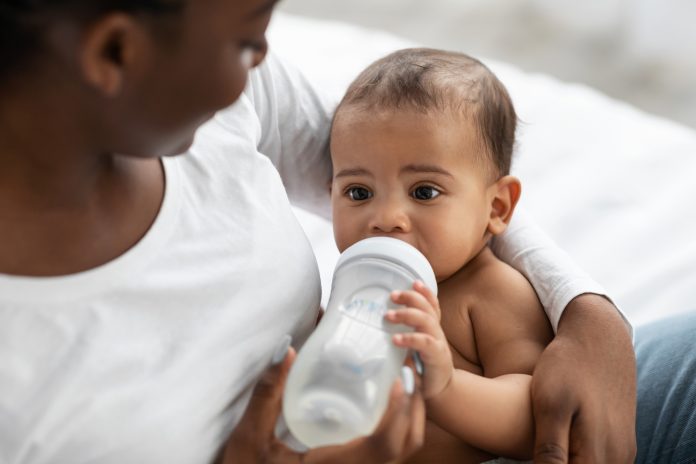Researchers looking at plastics’ connection with pregnancy and children’s health, find that placenta can absorb nanoplastics during pregnancy – affecting babies when born
Plastic breaks down into microplastics and even smaller nanoplastics, which can be found globally, including now, in babies.
There is currently minimal on children’s exposure level to nano-and microplastics, due to the limitations of current technology for researching very small particles.
This study therefore looks at nanoplastics ingested at school, in neonatal wards and through breast milk, breast milk substitutes and baby care products, finding a total of 37 different articles about nano-and microplastics in connection with pregnancy and childhood.
From this, researchers can now confirm the presence of microplastics in the placenta and in newborns.
Few studies have estimated how much plastic children ingest
From the time which babies are in the mother’s womb and throughout their childhood, they are exposed to numerous environmental toxic chemicals, as well as to nano-and microplastics.
Children can ingest microplastics numerous ways – including during pregnancy, in which they can absorb it through the placenta – as microplastics are in lots of products, such as baby bottles, toys, textiles and food packaging.
Additionally, researchers now believe that breast milk and infant formula may also contain microplastics.
Kam Sripada, a neuroscientist from the Norwegian University of Science and Technology (NTNU), said: “It’s quite possible that children are more exposed to microplastics than adults, similar to children’s greater exposure to many other environmental toxic chemicals.
“No one knows exactly how much microplastic a child ingests. But several studies now suggest that today’s children absorb microplastics in their bodies as early as at foetal age. This is concerning.
“Children do not have a fully developed immune system and are in a very important phase of their brain development. This makes them particularly vulnerable. It’s almost impossible to prevent children from ingesting plastic.
“Nano- and microplastics are so miniscule that they can travel deep into the lungs and can also cross into the placenta. At the same time, they transport dangerous chemicals with them on their journey. That’s why we believe that nano- and microplastics can be a health risk for children.”
Martin Wagner, an associate professor of biology at NTNU, added: “Although a lot of research is being done on microplastics, studies on the health effects of these plastic particles are limited. This applies especially to the effects on children.”
How can parents reduce the plastic which children are exposed to?
Parents are recommended by the authors to ensure children come into as few microplastics as possible, such as through the food they eat.
For instance, when microplastic particles end up in household dust, children may come into contact with them through crawling and playing on the floor. Then they put their fingers in their mouths. Researchers recommend that parents clean the house properly and regularly with soap and water, as dust may contain microplastics.
Additionally, parents should take caution buying personal hygiene products, and should choose varieties with less plastic.
Finally, if you are moving homes, it is recommended people choose building materials which don’t contain PVC or other types of plastic.
Microplastics carry a variety of toxic chemicals
Microplastics aren’t just plastic – they may have phthalates and metals added for colour, stabilization or as a biocide, for example – of which, several of these substances are harmful to children’s health.
Researching the cocktail of chemicals surrounding our environment, researchers additionally found that when microplastics end up outdoors, for example as particles from car tires, this plastic core is often coated with air pollution and car exhaust. This entails we are consistently ingesting nanoplastics, even just through breathing.
The research group is calling for more research in the field that focuses on babies and pregnant women’s level of exposure to various plastic substances. Looking at how plastic can be transferred to the foetus, researchers want parents to be aware of the problem, and polluting authorities to act against it.
The industries which manufacture the various plastic products aimed at children and women should be prudent and ensure that these products leach as little as possible, says the research group.
Previous research also suggest that social status plays a role in how exposed people are to various toxic chemicals – as people living in poverty have much greater exposure, including to microplastics. This displays a level of disparity in exposure to microplastics, which also needs to be addressed.
Wagner continued: “It’s difficult to study microplastics in the body, and even more difficult to do research on nanoplastics.”
Sripada finalised: “The authorities and industry bear the responsibility. We strongly encourage them to uphold the precautionary principle.”











